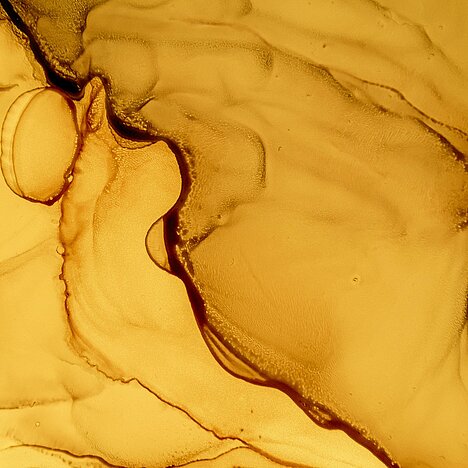Tartrazine

What is tartrazine?
Tartrazine is a yellow to orange dye that is added to foods, cosmetics and medicines to give them an appealing color. It is obtained synthetically from coal tar, a black and smoky substance that is normally used for road surfaces. Tartrazine was developed in 1884 by the Swiss chemist Johann Heinrich Ziegler and patented by BASF in 1885. It belongs to the azo dyes, which have a specific chemical structure in which two aromatic rings are linked by a nitrogen double bond.
Where is tartrazine found?
Tartrazine can be found in many different products that you or your dog might consume or use. These include, for example:
- Baked goods and confectionery
- sherbet powder
- snack products
- Pudding powder
- desserts
- mustard
- Processed cheese
- Cheese rinds
- Artificial casings
- Cosmetics
- care products
- Pharmaceuticals
To find out whether a product contains tartrazine, you should always read the label and look for the designation E 102 or the synonyms C.I. 19140, FD&C Yellow 5 or Acid Yellow 23.
What are the advantages of tartrazine?
Tartrazine has the advantage of giving foods, cosmetics and pharmaceuticals an attractive yellow or orange color that would otherwise be difficult to achieve. It is also very lightfast and color-stable, which means that it does not fade or change under the influence of light or other factors. Tartrazine is also very inexpensive and readily available.
What are the disadvantages of tartrazine?
However, tartrazine also has some disadvantages that you should be aware of. It can trigger allergic reactions or intolerances, which can manifest themselves in various symptoms. These include, for example
- Asthma attacks
- skin rashes
- hay fever
- blurred vision
- skin spots
These reactions can occur in both humans and dogs, especially in those who already have an allergy to aspirin or other azo dyes. As no antibodies can be detected, this is referred to as a pseudo-allergy.
Tartrazine can also impair attention and activity in children, as various studies have shown. This could also apply to dogs that are sensitive to dyes. Tartrazine could therefore lead to hyperactivity, restlessness or concentration problems in your dog.
Tartrazine is also suspected of damaging the genome and promoting cancer, especially thyroid cancer. However, this has not yet been clearly proven and is still being researched.
How can you avoid tartrazine?
If you or your dog is sensitive to tartrazine or you simply want to avoid it, there are some measures you can take. These include:
- Always read the label of food, cosmetics and medicines and avoid products that contain tartrazine.
- Buy fresh or unprocessed foods that do not contain artificial colors.
- Choose natural or plant-based dyes, such as turmeric, saffron or paprika, which also have health benefits.
- Find out about alternative products that do not contain tartrazine, for example in health food stores or natural food stores.
- Talk to your doctor or vet if you or your dog need to take medication that may contain tartrazine and ask about possible alternatives.
Tartrazine is an artificial yellow colorant that is used in many products. Although it has the advantage of giving a beautiful color, it also has some disadvantages that you should not underestimate. It can trigger allergic reactions or intolerances, impair alertness and activity and possibly damage the genome or promote cancer. If you or your dog is sensitive to tartrazine or you simply want to avoid it, you should always read the label and choose natural or vegetable dyes instead.
If you notice any signs of hypersensitivity or poisoning in your dog, you should see your vet immediately. We are not a substitute for a vet, but we try to be as accurate as possible. Every dog reacts differently and we recommend you get a second opinion or consult your vet if in doubt.
Stay healthy and take good care of your four-legged friend!😊